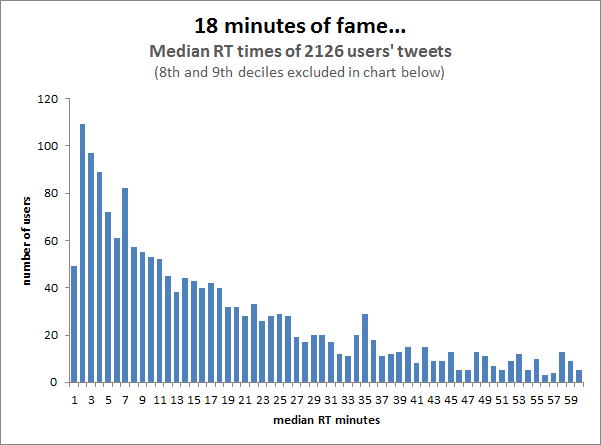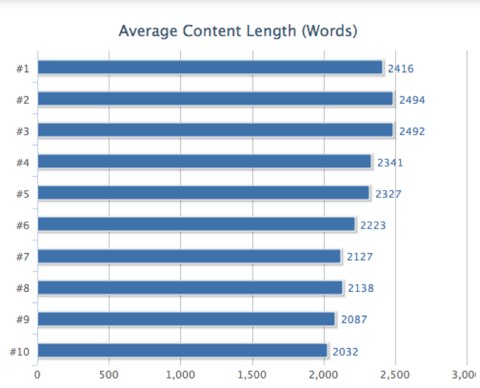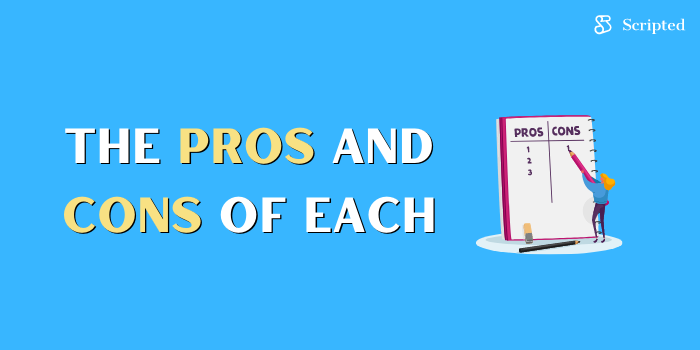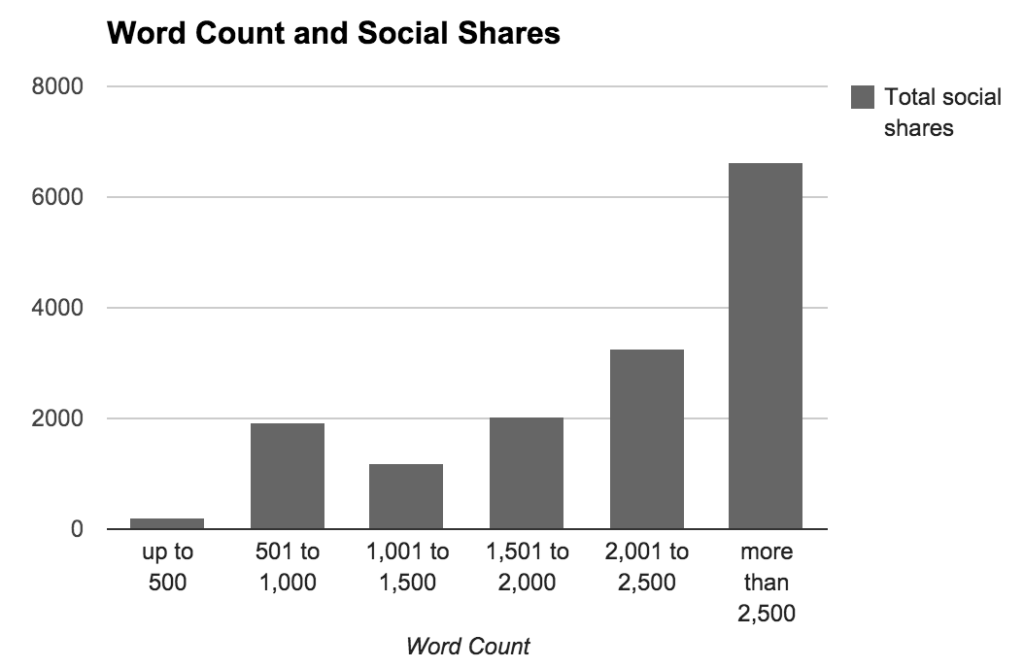- Blog Home
- Content Marketing
- Jd Peterson
- Short Form Content Vs. Long Form Content: Which Is Best For Your Business?
Short-form Content vs. Long-form Content: Which is best for your business?

There’s a lot of debate over the power of long-form content vs. short-form content in the world of digital marketing.
Some experts argue that long-form content is best because Google ranks these pages higher in search results. Others say that readers don’t have the attention span to read 2,000+ words of content in one sitting. They’d much rather be fed small snippets of information they can process quickly, so short-form content should be top priority.
Whichever side of the debate you choose, everyone seems to agree on one thing: content matters. Regardless of length, a consistent, reliable posting schedule is essential to building an audience and ultimately converting sales.
With this in mind, which format should you choose for your content: short-form or long-form? The truth is that both are effective when used correctly.
To choose the best length for your brand’s content, you’ll need to consider a number of things, like your business model, your audience’s habits and preferences, and your overall sales goals.
This guide will walk you through the pros and cons of both short-form and long-form content so you can ultimately make the best decision for your brand.
What is Short-Form Content?
First, it’s important to discuss the basics. Let’s start with short-form content. What is it exactly?
Short-form content is any type of content that is created quickly and consumed just as quickly by the reader. Tweets are the ultimate example of short-form content. Research states that the “shelf life” of the average tweet is just 18 minutes. Thanks to Twitter’s algorithm and format, once a tweet is 18 minutes old, views sharply drop and the tweet becomes old news.
But there are other types of short-form content, too. Facebook status updates, Instagram stories and photo captions, Snapchat “snaps,” and Tiktok videos are examples of social media short-form content. Most infographics, short video scripts, and blog posts under 1,000 words are also considered short-form content.
Here’s an example of a short-form blog post titled, “Can Dogs Eat Celery?” Clocking in at just over 300 words, readers will spend only a minute or two digesting this content. Since the goal of this post is to quickly guide readers’ attention to the call-to-action in the conclusion, short-form might work best for this company’s goals with this particular post.
However, in other instances, it might make more sense to lengthen the post, giving it a broader title such as, “10 Foods to Avoid When You Have a Pet,” which could easily be a more substantial 1,500 words or longer. This brings us to long-form content.
The Benefits of Short-Form Content
These days, it’s impossible to leave short-form content out of your content marketing strategy. Unless you’re choosing to ignore social media and email marketing altogether (or blatantly ignore the best practices of both), you’re likely already utilizing short-form content in your marketing plan. What’s more, with the rise of short-form video thanks to platforms like TikTok, it’s practically unavoidable.
Here are some key benefits of incorporating short-form content into your content calendar.
Easier to Produce
While you shouldn’t opt for short-form content merely because it’s easier to produce, the reduced content length sometimes makes it faster and easier to put out high-quality content even when you’re low on time and resources. But, is that always the case?
If you’ve ever tried your hand at writing ad copy, you likely learned pretty quickly that sometimes it’s harder to convey your points when you have a very limited amount of space to do it. So, if you’re truly writing effective short-form content that is insightful and valuable, you might end up spending extra time proofreading and editing to make it perfect.
While short-form content will still likely take less time than long-form pieces, it’s important to keep this aspect in mind and make sure that you aren’t rushing through a piece just because it’s short. Your short-form pieces deserve just as much attention to detail as your longer content formats.
Very Digestible
Though research does indicate that readers are interested in content that has depth, most busy consumers also appreciate quick, easy-to-consume content that gives them just enough information without demanding too much of their time. With that in mind, you must structure your short-form content in the best way.
Since you know that your target reader is probably interested in finding an answer/key point in as little time as possible, do them a favor and make their journey shorter. This means using lists, sub-headings, and short paragraphs so the content is more skimmable.
If you’ve determined that the short-form format is the best choice for a given piece of content, the last thing you want to do is use long, complex paragraphs and bury information in the middle of your piece. Instead, follow the best practices and front-load by putting the most pertinent information at the start of each section and paragraph.
Super Sharable
When people can quickly discern value from your short-form content by watching, skimming, or swiping through it, it encourages them to share it so that others can retrieve the same value from it. It’s also easier for a reader to quickly come up with a unique angle or takeaway that they can turn into a social media post when talking about your content.
If you’re dealing with certain formats, such as TikTok videos, you’ll also benefit from the above-average engagement rate seen on the platform. The vitality of social media in general makes short-form content very appealing for marketers these days, and it’s easy enough to experiment with the algorithm of different platforms when you’re working with short-form content.
Examples of Short-Form Formats
Short-form content is all around us, from short blog posts to the newsletters that fill our inbox. Here are some top examples of when short-form tends to win out:
-
Social Media Posts: Tweets might be one of the first examples that come to mind when you think of short-form content, but just about all social content falls into the short-form category these days, with a few exceptions like LinkedIn articles and some videos.
-
Email Newsletters: People who are reading their email are on a mission to finish the task as soon as possible, so you really have no time to waste. Emails should always be kept short, linking to longer-form content were helpful in case readers want to engage further.
-
Product Descriptions: How inspired would you be to add a product to your cart if you scrolled down to the description box and found thousands of words? There’s a reason why most product descriptions are only a couple short sentences and a few bullet points these days and they’re one of the highest converting examples of short-form content on the web.
-
Questions and Answers: When you head to an FAQ section, you expect to be met with concise and direct answers, not long articles. As such, whenever you’re answering common questions in any form, you should always aim to keep it short and digestible.
What is Long-Form Content?
Generally speaking, long-form content is any information that’s meant to be an in-depth, comprehensive analysis of a certain subject. This content length encourages critical thinking and sometimes even a shift in personal values or opinions.
Longer blog posts, detailed infographics, full-length video scripts, white papers, and books are all considered long-form content. These pieces should be at least 1,000 words, and longer is often better. Digital marketing expert Neil Patel suggests that 3,000+ word articles are the newest gold standard.
Long-form blog posts frequently include multiple links, both to internal content as well as to outside sources. You’ll also want to position yourself as a subject matter expert, incorporating statistics, testimonials, quotes, and other quality information. This helps create a relationship with your readers, building trust in the long-run.
Of course, long-form content isn’t always the way to go. Before determining the length of your content, you need to consider a few different aspects — starting with the content production process.
The Benefits of Long-Form Content
While it may be more popular than ever, short-form content shouldn’t suddenly be your top-priority. Frankly, you’re always going to need a mix of short- and long-form content for a well-rounded content strategy. After all, long-form content has an important role to plate in SEO and it isn’t going anywhere, no matter how consumer-centric or youthful your brand happens to be.
Here are some benefits of continuing to leverage long-form content in your marketing strategy.
Need help bringing your content plans to life?
Scripted’s expert writers can help you take an idea and turn it into an authoritative, thoughtful piece of content that you’re proud to put your name on. Sign up for your free trial today and see for yourself what our team can do!
Builds Authority
Consumers want to buy from brands who know what they’re talking about and, sometimes, it can be hard to demonstrate technical knowledge and niche authority with short-form content. When you’re dealing with technical topics or you just want to delve deeper into some insights, well-written long-form content is the perfect way to demonstrate your knowledge.
Landing pages sometimes take on a longer format for exactly this reason. When you’re attempting to sell a complicated product, like business software, it’s important to go through all of the questions, benefits, and common objections as you hopefully help the reader make a decision on whether or not your product is right for them.
With that in mind, the most successful long-form content is very intuitively structured and tends to take the reader on a journey, addressing their most pertinent question at the start and then unpacking it further by exploring additional questions and topics they’re likely going to want to know about as they learn more. Oftentimes, by the end of a long-form piece, you’ve answered questions they never would have thought to ask before they read your content.
Sometimes Easier to Rank
Ask any marketing agency and they’ll tell you that keywords are an essential ranking factor, but you can’t simply stuff a bunch of keywords into your content in order to fool the algorithm. When it comes to SEO, if you want to rank higher for a particular keyword, you have to create insightful, detailed content around the keyword and even more relevant content around adjacent keywords. It’s much easier to do that when you’re writing long-form content.
Additionally, backlinks are another factor to think about when your goal is search engine optimization. For highly competitive keywords, it’s often important to earn backlinks from relevant and authoritative websites if you want to rank well in the SERPs. The thing is, short-form content doesn’t earn backlinks too often.
When fellow websites link to a post, page, or guide, it’s because they have referenced it as a source or they think it provides trustworthy and relevant content to their readers. Long articles and white papers are much more likely to accomplish those things than, say, 7-item listicles. Since these backlinks build page authority and help drive organic traffic, they feed into your rankings too.
Improves Conversion Rates
Quality long-form content keeps readers on your page 40 percent longer and leads users to browse 25 percent more pages overall compared to short-form content. As you can imagine, not only does this mean your long-form content is making a bigger impact on your readers since they’re spending more time with it, but it’s also improving important metrics like “time on page.”
Metrics like these can feed into your SEO rankings, but more importantly they correlate with higher conversion rates. Since long-form content keeps readers engaged longer, and encourages them to check out other content on your site, you end up building greater brand awareness, trust, and authority with readers.
This isn’t to say that everyone who reads a piece of long-form content will convert into a lead or customer, but especially in the B2B world where sales funnels get very complex, leveraging opportunities to offer in-depth information can make all the difference when it comes to captivating readers.
Examples of Long-Form Formats
When you post long-form content, you should also consider presentation and ease-of-use.
For example, most experts discourage publishing a blog post that’s over 5,000 words. Instead, you might break this content into a series or consider publishing an ebook. Why? Because people don’t expect to focus on a blog post for more than 15 minutes at a time. If it takes much longer to read the information, you may lose your audience.
Here’s an example of a long-form blog post titled, “How Much to Tip Movers: 23+ Movers Give Advice.” This piece is much longer than the short-form post we mentioned earlier, and the writer’s objective is obviously to create a comprehensive guide on the subject of tipping movers. He positions himself as an expert on the subject by including quotes from 23 different industry professionals.
The total length of the post is a few thousand words, which is fairly long for a blog. Still, the average reader is able to digest (or at least scan) this content before their attention span urges them to move to the next article.
There’s a wide spectrum when it comes to the various types of long-form content on the website, spanning from blog posts to full-length books, but the most popular formats include the following.
-
Tutorials: Most often, tutorials tend to delve pretty deep into a given process, taking readers step-by-step through a set of actions and considerations. The best tutorials also include troubleshooting help, which adds to the length. If your tutorials are truly thorough and complete, they’ll probably always end up being long-form content.
-
Thought Leadership: When you’re trying to position yourself as a thought leader, you’re generally going to find yourself leaning toward longer form content where you’re able to get very deep into a topic and showcase your niche knowledge.
-
White Papers: White papers are extensive by nature as the aim is to either offer a complete overview of a subject or unpack the very technical details of a specific topic of product. In any case, quality white papers quickly tick up into thousands of words.
-
Podcasts: Podcasts are definitely on the lengthier side compared to other forms of audio and video content. Typically coming in at a minimum of 20-30 minutes and often running for an hour or more, podcasts give one or more topic experts a space to answer questions and explore a theme in great detail. Webinars are in the same bucket.
Short-form Content vs. Long-form Content: The Pros and Cons of Each Format
Simply stated, the primary benefit of short-form content is that it’s both easy to create and inexpensive. The obvious downside is that it also requires little investment from your reader, which makes it forgettable. Most readers won’t interact much with short-form content, so it won’t help you meet your sales goals quickly. In fact, most experts would argue that you will need to produce more short-form content in rapid-fire succession to achieve the same conversion results you’d achieve with just a few long-form posts.
Still, that doesn’t mean it’s useless. Consistently publishing short-form content is a great strategy that helps drive engagement and clicks. People like short content because they like instant gratification. They search for a term or see a snazzy headline, click a link, and find the information they came for within seconds. Many experts argue that short-form content’s greatest benefit is building traffic. Because it’s so easy to produce, you can make a lot of it, and people like it.
However, short-form content has a high turnover rate, and its virtual life is limited to a short period of time. That’s just the nature of this type of content. You will need to constantly produce shorter content to ensure it reaches as much of your audience as possible. This might be possible on certain platforms, such as Twitter, Instagram, and other types of social media, but it’s much more difficult when it comes to blog posts and videos.
Conversely, the primary benefit of long-form content is that it performs better in almost every metric.
Readers share long-form content on social media more frequently than short-form content. Recent studies suggest long-form content is shared 56% more often than short-form content.
Longer content also ranks higher in Google search results. Experts found that top search results averaged 2,000 words or more, and the shorter the post, the lower its rank on Google.
Finally (and perhaps most importantly), a study performed by Crazy Egg shows that long-form content has a 30% higher conversion rate.
However, it’s also more expensive and time-consuming to produce. But if you want to stay in the game, you’ll need some long-form content in your arsenal to keep readers interested and coming back for more.
Pillar Posts: What Are They and How Can They Work for You?
Now that we’ve established the benefits of long-form content vs. short-form content, let’s take it a step further and discuss the best content format of all: pillar posts.
Pillar posts go by many names, including anchor posts, pillar pages, cornerstone content, etc. – but they’re all essentially the same thing.
These are the long-form posts (or videos or whatever type of content you publish) that function as the foundation for the rest of your content. They are also essential for establishing your brand building rapport with your readers.
Pillar posts should be extremely detailed, helpful guides that position you as an expert in your field. They should be evergreen, meaning they are never outdated because you either update the information regularly or the information itself is timeless. And they should be at least 2,000 words long. Many experts recommend even longer pillar posts, though you should break up topics of 5,000 words or more into chapters or a series of individual posts so it’s easier for your audience to read.
If you’re not sure where to start when it comes to content, pillar posts are your best bet. Even with a brand new site, you can publish 5, 10, or even 20 pillar posts, then fill in the gaps later with short-form content, which will help you rank more quickly on Google and other search engines.
Turning Existing Content Into Cornerstone Content
If your site or business is already established, it’s fairly easy to determine which content has the most pillar post potential.
First, take a look at your analytics to find the posts that perform best in search results. (If you need help, BufferApp gives you a step-by-step guide that helps you conduct your own content audit.)
Which of these posts most closely align with your goals as a brand? Could you expand these posts so they’re at least 2,000 words? Do you have enough expertise to offer a detailed, comprehensive guide on the main topic? If the answer is “yes” to all of these questions, it’s time to turn these shorter posts into cornerstone content.
The Power of Long-Tail Keywords
One more thing: as you’re writing or revamping your cornerstone posts, don’t forget to focus on long-tail keywords. These are longer keyword phrases that help boost your rankings in Google search results. Research shows that long-tail keywords perform much better than shorter keywords, and it’s easier to rank for these phrases on Google. Long-tail keywords are your best friend when it comes to SEO.
The Benefits of Employing a Mix of Short-form and Long-form Content
When you combine a foundation of long-form content with the social aspects of short-form content, you create a marketing plan that successfully targets your audience from all angles. Ultimately, there’s no one-size-fits-all answer. In order to offer your audience the best possible content, you’re going to have to consider a few key aspects like user intent, the topic at hand, and the length of similar content that already exists.
User Intent
User intent is one of the most important components of developing a smart content strategy.
Also known as search intent, this concept refers to the goal the user is trying to accomplish when they type a question or phrase into a search engine. Taking the time to understand search intent will help you decide what type of content you want to create for a given keyword or topic.
For instance, if it’s a simple question like “how long do I bake chicken for?” then writers are likely looking for a quick, simple answer that they can plug into their timer. While you might want to include links to your favorite chicken dishes, they’re probably already cooking, so you should just offer a concise answer.
On the other hand, if the search query is a bit more complex, like deciding between two high-end products, readers are probably looking for additional insights to help them make an educated purchase. In that case, you’d likely offer longer content with a side-by-side comparison and a deep dive into each product’s features, pros, cons, and pricing considerations.
Topic Complexity
When it comes to big purchases, most consumers like to do their research. Long-form content gives brands the space to explain high-tech and high-end offerings so that consumers feel educated when making a purchase decision. However, focusing too much on long-form or short-form content is sure to damage your marketing efforts.
No matter what industry you’re in or what product you ultimately want to sell your readers, you need to think about the specific topic at hand. How much information can you truly offer on it? How much information does your audience actually care to know? Striking a balance between these two components is key to figuring out the perfect length.
Sometimes, you’ll realize that while there is plenty of information to offer on a topic, it’s simply not tightly coupled enough to try and fit it all into one article or guide. If that’s the case, it might be better to create a series of shorter content pieces and link them together. By breaking something complex into small, bite-sized pieces, you can get your content out the door faster and avoid overwhelming readers.
Top-Ranking Content
While it’s not always the case that the content currently on the web represents the best or most preferred format, it’s a good rule of thumb to look and see what’s currently ranking when you search for a term related to the content you’re planning.
In addition to checking the length of the top-ranking content, you can also consider aspects like whether there is a featured snippet on the search engine results page. Also, look at the same search using your mobile devices as they are often different. For instance, a search for something meal related on mobile is more likely to show local results (like restaurants) than recipes.
Once you have a general idea of the content that’s currently performing well for your search term, you can decide how to approach your project. It’s entirely reasonable to decide on a new approach, as long as you’re keeping search intent in mind, but gaining context from current search results will help you make an informed decision.
Creative Ways to Share Long-Form Content
- Create your long-form content, such as a cornerstone post for your blog, an ebook, or a white paper. Then pull some of the most interesting quotes or statistics and create a series of Facebook status updates, tweets, and Instagram captions or stories. You can post these snippets at regular intervals prior to the release of your long-form content to build interest.
- Create a short series of videos that consist of highlights from the long-form content. Upload the videos to your YouTube channel or Facebook page, then share a link with a quick caption on your social media platforms.
- Organize the main talking point of your content into a highly visual infographic that your audience can share easily across various social media platforms.
- After posting or releasing your long-form content, create a series of shorter blog posts that complement the longer post or ebook. Make sure you link your posts so it’s easy for readers to navigate from one post to the next, which helps drive traffic and lowers your bounce rate.
Give Your Target Audience What They Need
To reiterate, short-form content can be just as resource-intensive as long-form content, and you should never consider it to be low-hanging fruit. On the flip side, just because you can fit a bunch of keywords into a longer article, that doesn’t mean you’re automatically going to rank in the top spot.
No matter the length of your project, producing successful content means investing time and resources into sharing something that’s engaging, insightful, and valuable to your target audience. The thing is, finding high-quality and reliable content writers to help you do that is tough, especially if you’re in a more technical industry.
If you’re interested in connecting with the web’s best content professionals, Scripted can help. Whether you’re producing short blog posts or extensive white papers, we can assist you in hiring a talented writer who’s familiar with your industry and skilled in crafting thought-provoking content in the format of choice.
Ready to get started? Sign up for your free trial today!
Hiring a Content Writer on Scripted
If this process seems a bit overwhelming, you may be relieved to know that there are professionals who can help. Many business owners hire content writers to create both short-form and long-form content. The proficient content writers on Scripted have both writing skills as well as SEO skills. They understand the power of utilizing short-form and long-form content to boost your marketing efforts, and they know when your goals require one format or the other. If you’re stuck with your digital content marketing strategy, a Scripted content writer can help you make decisions that help you rank higher in search results as well as convert readers into a long-standing audience.




